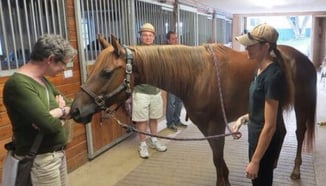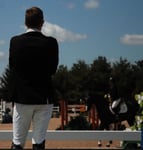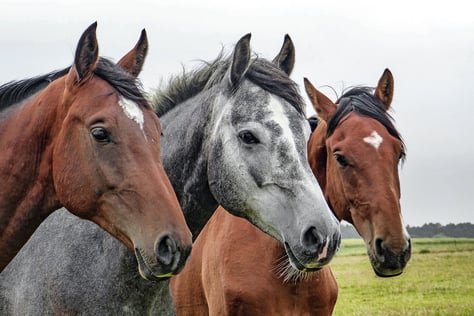 Leasing a horse is an ideal way to see if you want the responsibility of owning your own horse. You have the responsibility of caring for the horse in addition to riding it and you can see if the time required to own your own horse fits with your lifestyle. Too often people are quick to buy a horse and then realize it’s too much work. Sometimes the horse suffers from neglect when stuck in his stall for days, or the owner wants to quickly sell the horse and isn’t that concerned about the buyer.
Leasing a horse is an ideal way to see if you want the responsibility of owning your own horse. You have the responsibility of caring for the horse in addition to riding it and you can see if the time required to own your own horse fits with your lifestyle. Too often people are quick to buy a horse and then realize it’s too much work. Sometimes the horse suffers from neglect when stuck in his stall for days, or the owner wants to quickly sell the horse and isn’t that concerned about the buyer.
Leasing is also a great way to always have a horse that is suited to the level at which you ride or your riding interest. For example, if you want some additional “saddle time” when you’re just learning to ride, you might want to lease one of the riding school’s lesson horses. But as you progress or start jumping, you may want to start riding a horse that takes more skill to ride or can take you over bigger jumps. If the horse is for a child, you may want her to start with leasing a small pony, but as she grows you can switch to leasing a larger horse. If you bought the horse that was right for you at that point in your riding career, you’d be buying and selling horses just about every year. But with leasing, you can just end a lease on one horse and start a lease on another.
Most often, owners lease their horse because either they don’t have enough time to exercise their horse every day or they need help with the expenses of keeping the horse at the barn or in training. If you are considering leasing a horse, it is important to get everything in writing. I am not an attorney so this is not legal advice – it wouldn’t hurt to run a lease agreement past an attorney.
It’s important that you are very clear on who will be responsible for what expenses for the care of the horse. It can be anything from splitting everything in half to you having complete responsibility for expenses. Most often, this is based on how much you are going to ride the horse. If you have a full-lease, you typically can ride the horse any time you want and as much as you want. With a half-lease or partial lease, you and the owner (and possibly other leasees) will each have certain days on which to ride the horse. It is important that you put in writing which days who has the opportunity to ride the horse. Most leases end when both people show up to ride the horse at the same time.
Another problem sometimes occurs when the horse is hurt when someone is riding them. Will it be the owner’s responsibility to pay for the horse’s care or will it be up to whoever was riding when the horse became hurt that will pay? How will you determine who is at fault? Let’s say you just rode the horse yesterday and when you put him in his stall he was fine. But sometime in the night, he might have gotten himself cast and he strained a leg muscle struggling to get up. Is it your turn to pay for vet treatment because you rode him last or should the owner pay because she has ultimate responsibility for the horse? These things are best put in writing as a contract that is reviewed by an attorney.
 Other issues such as mandating wearing a helmet when riding or not going out on trails or what bit to use when riding are all additional questions that should be discussed before the lease begins. Only by being sure that both (or all) parties involved in the lease understand the rules can a lease be the ideal situation for all, including the horse.
Other issues such as mandating wearing a helmet when riding or not going out on trails or what bit to use when riding are all additional questions that should be discussed before the lease begins. Only by being sure that both (or all) parties involved in the lease understand the rules can a lease be the ideal situation for all, including the horse.



